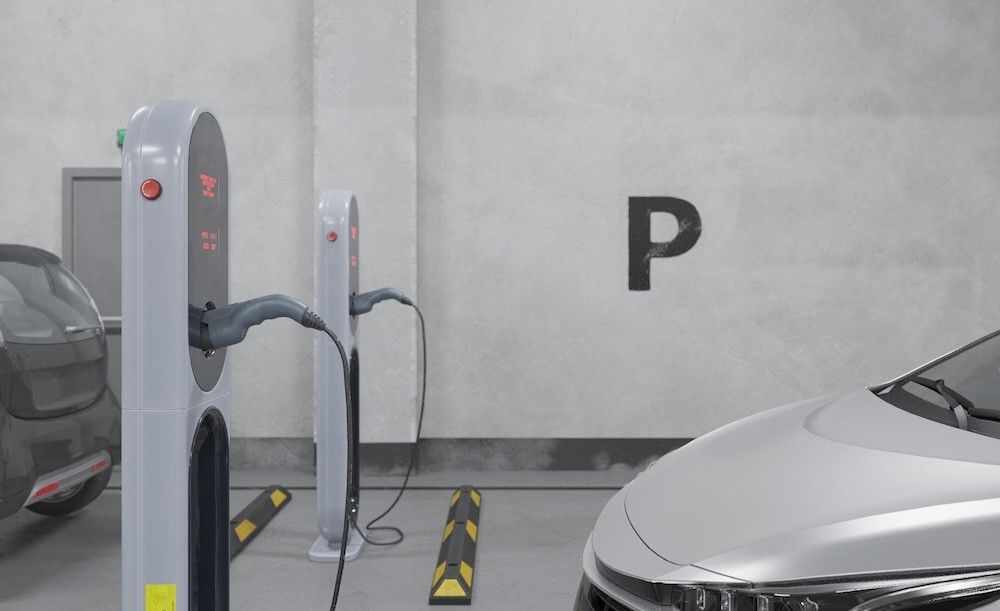Ohmie Go and the Rise of E-Mobility as a Building Standard


Cut through the green tape
We don't push agendas. At Net Zero Compare, we cut through the hype and fear to deliver the straightforward facts you need for making informed decisions on green products and services. Whether motivated by compliance, customer demands, or a real passion for the environment, you’re welcome here. We provide reliable information—why you seek it is not our concern.
During a recent conversation with Kyle Bolto, CEO and Founder of Ohmie Go, our Co-Founder Karol Kaczmarek explored how shared electric vehicles are reshaping the residential landscape in Australia and what that might mean globally. With 48 e-mobility hubs already in operation, Ohmie Go is turning EVs and e-bikes into everyday building features rather than afterthoughts.
🎥 Watch the Full Interview
Dive deeper into the conversation with Kyle Bolto as he shares firsthand insights into Ohmie Go’s mission, the challenges of embedding shared mobility into modern housing, and what the future holds for sustainable urban transport.
The company’s model is simple but powerful. It installs and manages shared mobility services, including vehicles, charging, and support in apartment buildings, so that residents can enjoy convenient and cost-effective transport without owning a car.
From Amenity to Essential: Ohmie Go’s Vision for Future Housing
Across a growing number of residential developments in Australia, Ohmie Go is helping residents give up their second cars or skip owning one altogether by offering private access to EVs and e-bikes directly within their buildings. These services, available only to residents, are often installed in new builds and are designed to be part of the building’s core amenities.
“We want our service to be as natural and expected as a gym or a swimming pool,” says Bolto. “That’s how we know we’ve embedded sustainable mobility into the fabric of urban life.”
Hub Design and Demand Patterns: Built to Match Each Building
Ohmie Go takes a data-driven approach to sizing each e-mobility hub. A typical setup includes one shared car per 100 apartments, but the number of e-bikes or chargers may vary depending on the local demographic and proximity to public transport.
“The utilization patterns are remarkably consistent across cities like Sydney, Melbourne, and Brisbane,” Bolto notes. “Once people settle in and try the system, demand grows quickly.” In some cases, Ohmie Go has expanded services just months after launch to keep up with resident interest.
Equity and Flexibility: The Impact of Pay-As-You-Go Pricing
One key factor in adoption is the company’s pricing model. Residents pay only when they use the service, making it an attractive and flexible alternative to car ownership. In many buildings, residents have chosen to forgo a second car or even become fully car-free thanks to this access.
“When we’re involved early in the building’s design, we often see developers reduce or eliminate parking,” Bolto says. “That naturally encourages shared mobility and helps keep housing costs in check.”
Keeping Operations Lean with In-House Tech
From installation to cleaning to insurance, Ohmie Go manages the entire operation. But instead of scaling through headcount, the company relies heavily on automation. Every vehicle is monitored by multiple cameras and backend software that automatically detects cleanliness or damage and flags it for service.
“We’ve invested deeply in building our own systems,” Bolto explains. “And that’s helped us keep our operating costs lower than we originally expected while maintaining quality.”
Meeting Regulations and Supporting Developers
Australia’s National Construction Code now requires new buildings to be EV-ready, with proper electrical infrastructure in place to accommodate widespread charger installations. Ohmie Go works closely with developers to meet these evolving requirements and implement practical, scalable solutions.
Retrofitting older buildings, however, remains a challenge. “It’s technically complex and costly,” Bolto says. “Government incentives are helping, but the key is to design smarter programs that ensure long-term value rather than just short-term compliance.”
Grid Integration on the Horizon
As EV use grows, so does the potential for vehicle-to-building and demand response systems that let hubs act as energy assets. While the technology is ready, Bolto sees regulatory and commercial hurdles as the primary barriers.
“Our belief is that the end user, the EV owner, should be the main beneficiary of these services,” he says. “But for that to work, we need policy and pricing mechanisms that support it. It’s not a tech problem anymore.”
From Australia to the World: International Growth Plans
Ohmie Go is now exploring international expansion with a clear focus on Southeast Asia, the Middle East, Europe, and North America. Densely populated cities like Singapore and major urban developments in Saudi Arabia and the UAE are high on the list.
“What we’ve found is that our solution resonates best in markets with rapid urbanization and strong interest in sustainable infrastructure,” Bolto explains. “We’re actively looking for the right local partners to help us enter those markets effectively and responsibly.”
Tracking Emissions and Proving Impact
Every trip and charging session through Ohmie Go is logged and analyzed, enabling the company to deliver quarterly reports that track Scope 2 and Scope 3 emissions reductions. These reports help developers and property managers meet ESG and sustainability targets and often form part of their official certifications.
“We’re giving them the data to back up their sustainability story,” Bolto says. “It’s no longer just about installing EV chargers. It’s about proving real, quantifiable outcomes.”
Designing eDock: The Seamless E-Bike Experience
When it came to e-bikes, Ohmie Go could not find a system that met their usability and design standards, so they built one. The result, eDock, is a fully in-house solution designed for easy access, high utilization, and aesthetic compatibility with high-end buildings.
“Developers put a lot of effort into architecture and interiors,” says Bolto. “Our solutions need to fit that environment, not clash with it. eDock had to be as elegant as it is functional.”
Mobility as a Feature, Not a Service
A growing number of developers now treat shared mobility as a permanent feature of the building rather than a bolt-on service. Bolto believes this shift is key to long-term change.
“We’ve always seen e-mobility as an amenity,” he explains. “It adds value to the building and makes it more attractive to buyers and tenants. Over the next decade, we expect to see it become as standard as co-working spaces or rooftop gardens.”
Importantly, Ohmie Go’s model allows flexibility. Some buildings only offer e-bikes or charging infrastructure, while others deploy full hubs with shared vehicles and smart charging. “The mix can vary,” Bolto adds, “but the direction is clear.”
Why End-to-End Execution Matters
A final differentiator for Ohmie Go is its fully integrated approach. The company designs, builds, operates, and supports every part of its system, including software, customer support, and maintenance, without relying on third parties.
“We’ve seen too many cases where outsourced mobility services fail after a year or two,” says Bolto. “We’re here to show that when done right, shared mobility can be sustainable, scalable, and valuable for both residents and the planet.”
Explore more interviews and insights from climate-forward innovators at Net Zero Compare.

More related content

Turning Waste into Fuel: How Hydrogen Refinery is Reshaping Sustain...

Interview with Jing Tian, Chief Growth and Revenue Officer at Tigo ...

What is Holding Back the Grid? Key Takeaways from a Conversation wi...
